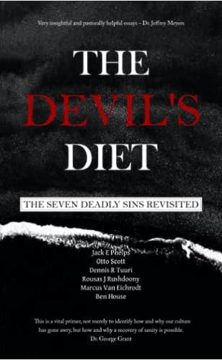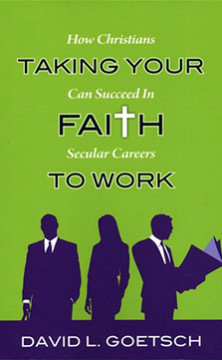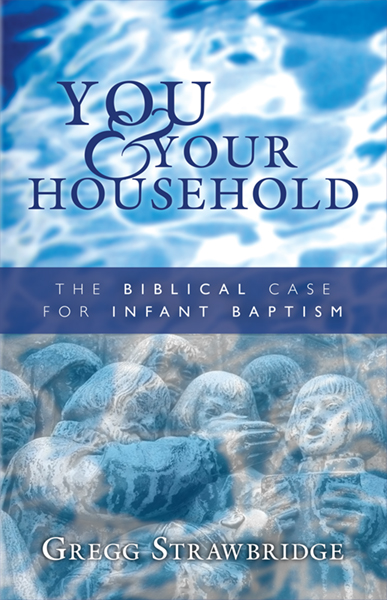For a little more than the past year, my two oldest sons and I have taken part in Trail Life, what we might describe in short-hand as “Christian Boy Scouts.” Or perhaps, what the Boy Scouts were always supposed to be. As of 2023, there were more than 1000 Trail Life troops all around the United States, and that number has only risen. The program offers a lot, which my boys and I don’t even take full advantage of, but it has been a great opportunity for us to spend time together, meet other Christian men and their sons, and do various activities together.
(more…)Mugs of Tears
One of the chronic American maladies is the swell of emotive sobs that follow major national events which haven’t gone one’s way. Gone are the days where your candidate lost an election and you get to work beating him next time. Now, you cry about it. Literally.
Even worse for us today, the reproaches are televised. Bad enough are the TV anchors breaking down on live television; worse are the Tik-Tok-ers who so strongly feel the urge to scream that they set up a selfie camera to capture their rage, before uncorking it. What good do any of these tears do? They’re often performative, rather than heartfelt or actually meaningful.
(more…)Heartburn
“They said to each other, ‘Did not our hearts burn within us while he talked to us on the road, while he opened to us the Scriptures?’” (Luke 24:32)
Ears can be “tickled”; ears can be “pricked”; heads can be “level”; heads can be “cool”; guts can be “wrenched”; and minds can be “blown.” Things can make us “heartbroken” or they can be “heartwarming.” “Heart-burn” tends to have different connotations.
When the two disciples acknowledge that their hearts “burned” at the opening of the Scriptures, what do they mean?
(more…)On Saintly Remembrance
Precious in the sight of the Lord is the death of his saints. (Ps 116:15)
In a culture devoid of martyrdom, the ancient and medieval “cult of saints” can appear to be a strange and superstitious practice. We in the Christian (or post-Christian) West have not undergone the fires of persecution, and a “Christian death” is something normally undergone in relative peace. Even the case of fatal disease is a far cry from the dismemberment of the Coliseum.
Yet the idea of celebrating or commemorating the death of an important person is not as foreign as we might think.a Indeed, in our American “civil religion,” there are “saints days”: for Columbus, Martin Luther King Jr., and so forth. As someone has said (the reference of which escapes me), after the Civil War, Memorial Day became a sort of civic “All Saints’ Day.” Yet the commemoration of Christian saints has been largely lost among Protestants.
(more…)- As John F. Baldovin points out, “celebration” is a “feast”—an “exuberant manifestation of life itself—while “commemoration is simple remembrance. Nonetheless, either “celebration” or “commemoration” may be used in discussions of remembrance. John F. Baldovin, “On Feasting the Saints,” Between Memory and Hope: Readings on the Liturgical Year, ed. Maxwell E. Johnson (Collegeville, MN: The Liturgical Press, 2000), 376. (back)
Amos’s Prophetic Disobedience
Our first president, George Washington, said in his Farewell Address,
“Of all the dispositions and habits which lead to political prosperity, Religion and Morality are indispensable supports. . . . Let it simply be asked where is the security for property, for reputation, for life, if the sense of religious obligation [were to] desert the oaths, which are the instruments of investigation in Courts of Justice?” a
How can we trust the word and life of our fellow citizens, if religion is gone? And what would that do to American prosperity? Washington’s answer was that if religion was gone, we could not expect morality to remain long without it. And thus, “political prosperity” would quickly follow them both out the door.
From the beginning of the United States, religious themes found their way into political discourse. In Thomas Jefferson’s second inaugural address, he said:
“I shall need, too, the favor of that Being in whose hands we are, who led our fathers, as Israel of old, from their native land and planted them in a country flowing with all the necessaries and comforts of life.”b
Symbolically, Europe was Egypt, America the Promised Land, and the European settlers Israelites. America was to be a “city on a hill” and a “light to the nations,” in the language of the Founders. All of this meant that from its earliest days, America had a “religious dimension” that touched all of its institutions, including its politics, and led to what sociologist Robert Bellah has called a “civil religion.”c
(more…)- “Washington’s Farewell Address to the People of the United States,” https://www.govinfo.gov/content/pkg/GPO-CDOC-106sdoc21/pdf/GPO-CDOC-106sdoc21.pdf (accessed October 11, 2023) (back)
- “Thomas Jefferson Second Inaugural Address,” https://avalon.law.yale.edu/19th_century/jefinau2.asp (accessed October 11, 2023) (back)
- Bellah, Robert N. “Civil Religion in America.” Daedalus 96, no. 1 (1967): 1–21. http://www.jstor.org/stable/20027022. I am indebted to Bellah’s article for many of the presidential quotes listed here. (back)
Hansel, Gretel, and God’s Grace in Prayer
How does God’s grace work in our prayer?
I attended my first opera last week, “Hansel and Gretel” by Engelbert Humperdinck.
You may know the Grimm fairy tale by the same name: scarcity of food leaves a brother and sister abandoned in the woods, where they come across a witch who wants to eat them, but they manage to defeat the witch and all is well.
But as I was flipping through the playbill before the performance, an article about the content of the opera struck me. According to the critic, the children’s defeat of the witch is a triumph of humanism: “[H]eaven has played no part in the rescue of Hansel and Gretel or the awakening of the spellbound children. They are saved by their own wits.”
So I watched the performance with great interest in how this theme might actually play out. This critic was convinced that Humperdinck’s opera had no space for God’s providence in the salvation of the characters. Was he right?
(more…)Hypocrisy, Atheism, and Ragamuffins Revisited
I’ve never read anything by Brennan Manning.
I grew up with Rich Mullins’ smash hit “Awesome God” on constant rotation on our local Christian FM station. And I came to learn through a college roommate that Mullins was a big fan of Manning, even naming his band “A Ragamuffin Band” in ode to Manning’s book “The Ragamuffin Gospel.”
I’ve never read anything by Brennan Manning, but I realized this morning that my younger self was perhaps more influenced by him than I knew. And that influence came through one, lone, gravelly-voiced audio quote within another smash hit album of my youth: DCTalk’s 1995 world-shaking “Jesus Freak.”
On the album, immediately after the title track, is that quote from Manning:
“The single greatest cause of atheism in the world today is Christians who acknowledge Jesus with their lips, then walk out the door and deny Him by their lifestyles. That is what an unbelieving world simply finds unbelievable.”
My teens were filled with that quote rattling around in my mind, and that sentiment pervading the Christian culture I grew up in.
I remember those days, and I remember that world. But I wonder if it’s true anymore? I wonder if that’s still the world we live in?
(more…)The Resurrection of Christ in Four-Part Harmony
Since the earliest centuries, Christians have been interested in the question of how to reconcile what seem to be discrepancies in the four Gospels. Especially around Holy Week and Easter, Christians are keen to understand on which day each event of the Passion took place. Was the Last Supper on Wednesday, Thursday, or Friday? Could it be considered a Passover meal or a prequel to the Passover proper? But often, once our Easter feasts have been digested and the world moves on, these questions withdraw to foreign pastures where we forget them.
The Resurrection, however, was not the last event of Christ’s earthly life, and more events followed it. And so, while the chronology of the Passion is a fascinating question in and of itself, and one I’ve devoted time to over the last years, I’ve recently been especially interested in the Resurrection and post-Resurrection events, and how they fit together.
This “alignment” of the four Gospels has often been called “harmonization,” and RT France comments that this is a helpful and fitting designation. For, harmony “is what is created when a number of voices sing their own different parts at the same time. It is not the same as unison, where all sing the same notes. Because the voices are different there is a greater richness than in unison, but because they sing together under the direction of a single composer, what we hear is not a collection of discordant notes, but a richly satisfying harmony.”a Indeed, each Evangelist highlights different things he is interested to communicate, while passing over other things that the others deem more important. And in reading them together, these themes ought to come together so that they can be read in one key, time signature, and tempo.
(more…)- R.T. France, “Chronological Aspects of ‘Gospel Harmony’,” Vox Evangelica 16 (1986): 57. (back)
Created for Communion
Guest Post by Jon Herr
Humans are beings driven by power, conflict, and struggle. Individual power. Gender conflict. Class struggle. We as homo sapiens do not exhibit sapience—wisdom—so much as struggle.
Perhaps we ought to call ourselves homo conflictus.
We’re conflicting, power-hungry strugglers, whose relationships are shot through with antagonism, friction, and tussles. A white man is unable to speak with a female person of color, without their interaction being defined by the intersection of her social marginalization with his social dominance.
Or, so we are to believe.
Suppose for a moment, if you will, that In the beginning, when there was nothing, Apsu and Tiamat gave birth to gods who clamored and upset their peace, bringing distress and conflict. . . . That In the beginning, Apsu plotted to kill his own sons, but instead was himself killed by his son Ea. . . . That In the beginning, Tiamat made demons to avenge her husband, but instead Marduk killed her and formed the earth and sky from her distended corpse.a
Suppose for a moment, if you will, that prehistory leading up to the creation of the world and of humans was made up of unending wars for power, full of conflict, and struggle, culminating in regicide—the assassination of the cosmic king and queen of the heavens.
(more…)- See the Babylonian Enuma Elish tablets (back)























